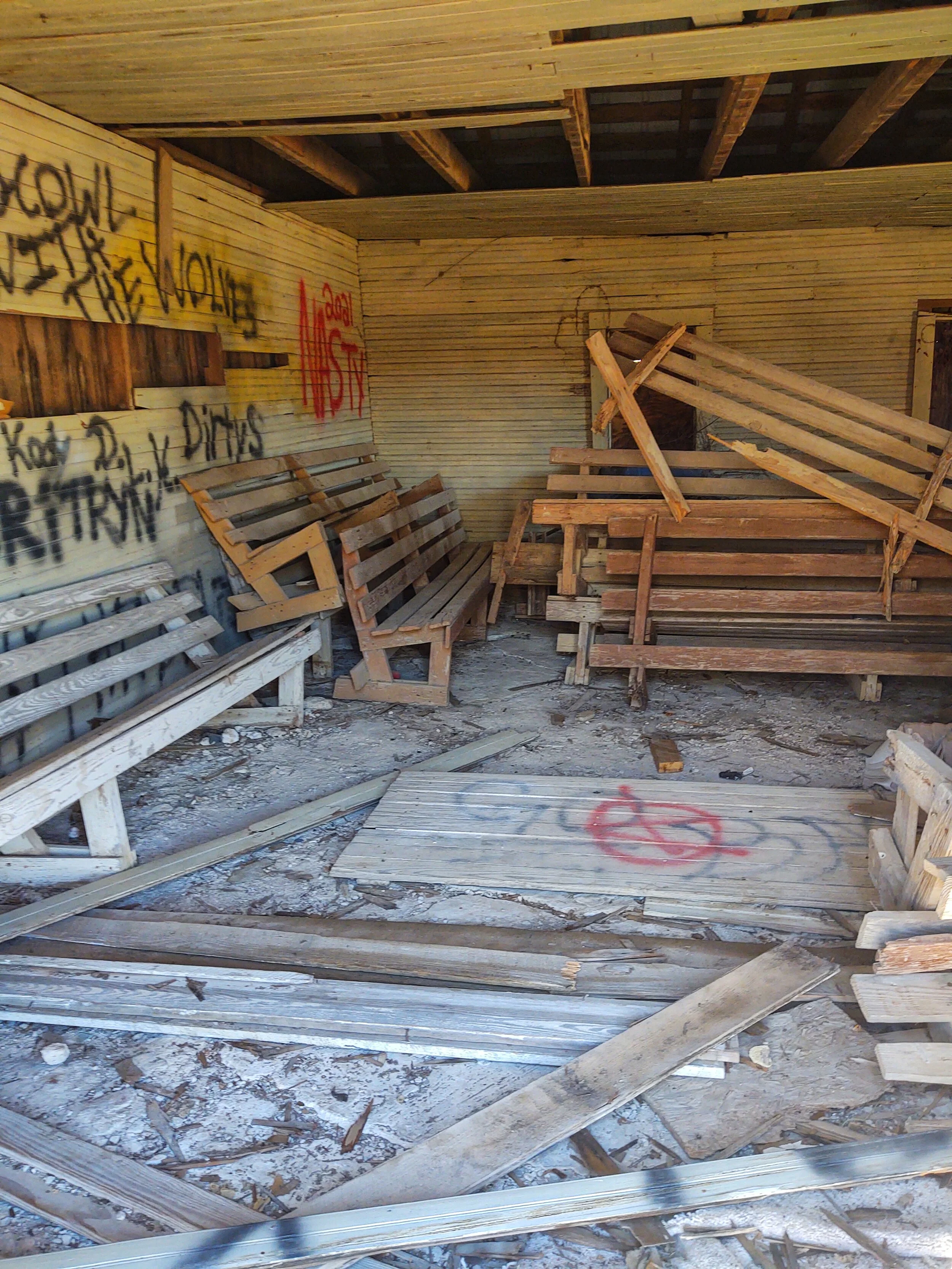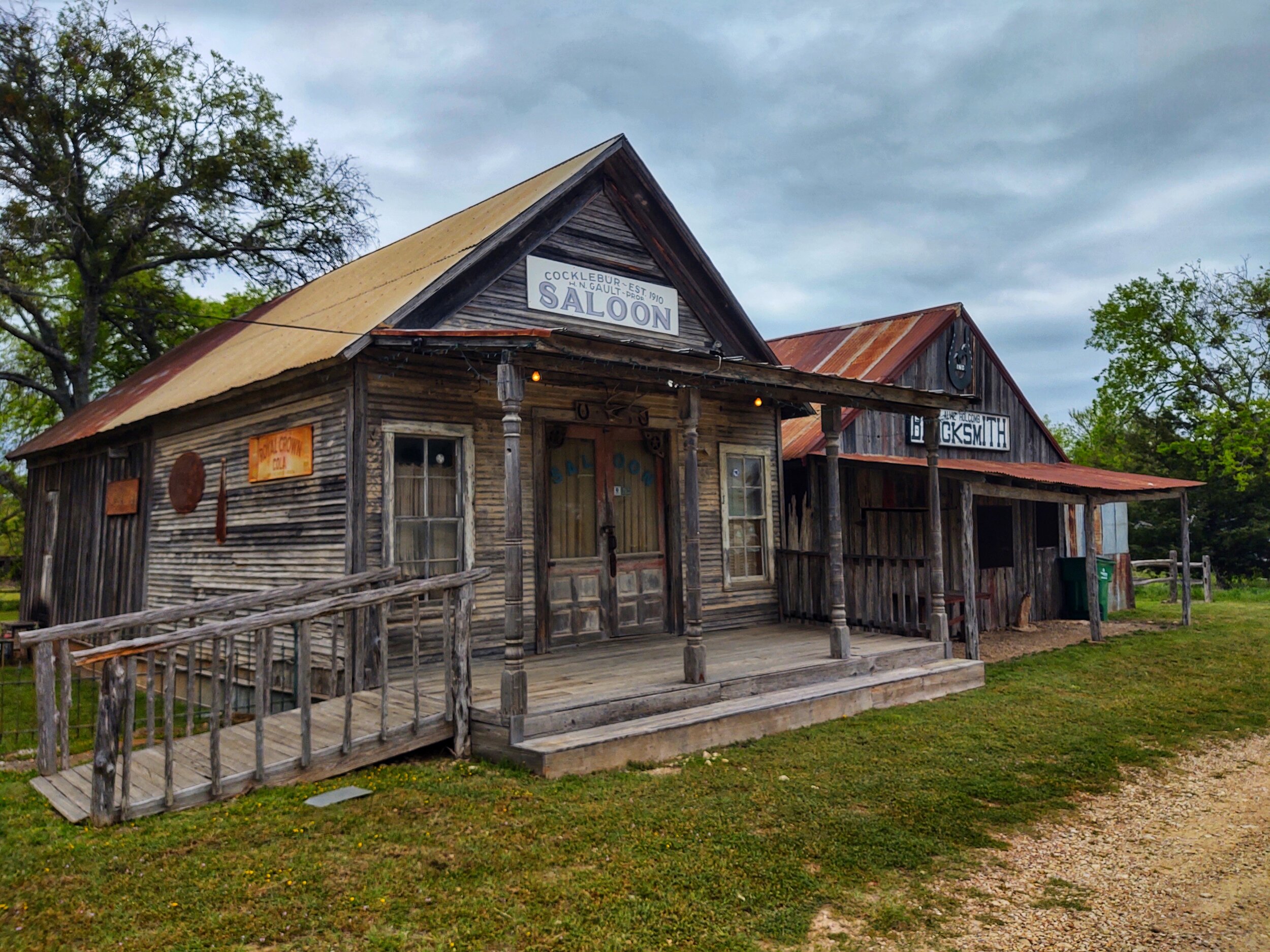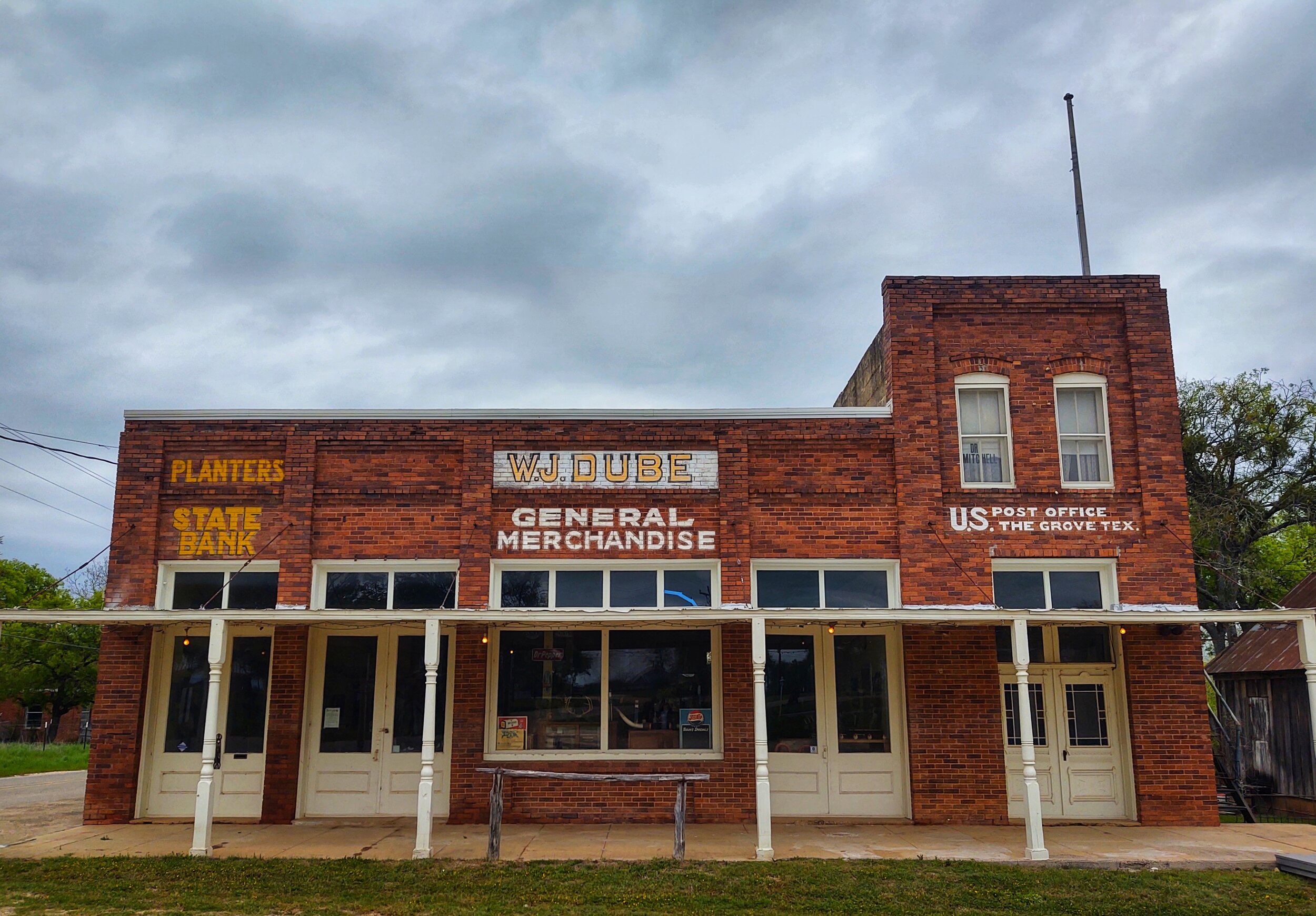Texas Ghost Towns
Some of these towns may not be ghost towns in the true sense of the word but they are not what they were before and have seen steep declines in their populations.
Belle Plain
Located in Callahan County, Belle Plain was established in the 1870’s. It served as the county seat until the railroad diverted the population to Baird in 1883. Once the county seat moved, the decline was rapid. The college closed in 1892 and by the end of the 1890’s, only a handful of families remained. There’s not much left to see except for some ruins from a distance and the cemetery. To get to the markers, we had to drive on a dirt road (February 2021).
The ruins of Belle Plain College stand stoically in the distance.
The cemetery holds many old graves, some broken up as this one above.
Cartersville
Located in Parker County, Carter AKA Cartersville was established in the 1860’s. At its height, it had a post office, flour mill, blacksmith shop, cotton gin, general store, church and a school. The population started to decline in the early 1900’s and the town was all but gone by the 1920’s. The only thing that exists now (February 2021) is the old church and some monuments that tell the brief story of Cartersville. UPDATE: In July 2021, someone set fire to the old church and it was completely destroyed.
Chalk Mountain
Located in Erath County, Chalk Mountain was founded in 1860. By 1890, there was a post office, a school, a gin, and a couple of churches. The Masonic lodge was established in 1904. A local stopped by as I was photographing the building and told me that the original lodge was at a different location but moved here after a tornado hit it. The only part of the original building that survived is now the top floor of the current building.
Kimball
Located in Bosque County, Kimball was founded in 1853 by Judge John Kimball. The early years proved to be prosperous thanks to the town being a commerce center for cattle drives. It had several churches and stores, a couple of schools, a gin, and many saloons. The town began it's decline after the Santa Fe Railroad bypassed the town by just a few miles. The town existed until about 1910 and still had several residents despite the federal government coming in and buying out the remaining people during the 1940’s. The Feds did that for the construction of Lake Whitney by the U.S. Army Corps of Engineers.
The ghost town has been reduced to a handful of buildings and is now located within Kimball Bend Park. You can still see some of the old concrete foundations that go back to the 1870s. There are some old town streets still visible from what I hear but I only observed one.
The park offers 30+ spots for camping with water and electric hookups, and has a boat ramp for fishing It isn’t very big so you will need to make reservations. We were allowed to drive through it but there is no day use…..camping only.
Thankfully they kept what was left.
Only a couple of walls remain.
Norse
Located in Bosque County, Norse established when Norwegians settled the area in the 1840’s. It is believed that the Norwegians chose this region of Bosque County because it reminded them of their homeland. A church was built in 1878 — Our Savior's Lutheran Church. In addition to the church, Norse had a few storefronts, a school, and a post office. By the late 1920’s, the post office and few businesses closed leaving the church to remain alone. In 1982, King Olav V of Norway visited Our Savior's Lutheran Church to honor Cleng Peerson, Norse notable who is buried in the church's cemetery.
Our Savior’s Lutheran Church
Putnam
Located in Callahan County, Putnam was established in 1880 thanks to Texas and Pacific Railway. There was once a grand plan to make Putnam a center of wellness with a mineral water based health resort. Unfortunately that plan fell in the shadow of nearby town Mineral Wells and just could not compete. The population dropped to less than 100 by 2000 and, when we drove through in February 2021, we saw a handful of homes and other structures that appeared to be occupied but even more that appeared abandoned and in various states of decay.
Abandoned storefront
Abandoned storefront
Abandoned storefront
Strawn
Located in Palo Pinto County, Strawn came to be in the 1880’s when the Texas and Pacific Railway began service. Originally it was called North Fork because of its location on Palo Pinto Creek. Russell's Pocket (which was to the west) and Davidsonville (to the east) merged to form what would ultimately be known Strawn.
Oil was discovered in Palo Pinto County not far from Strawn in 1895 but development didn’t occur until 1915. The Strawn Oil Company drilled its first natural gas well in 1924. Between 1910 and 1920, the Strawn Coal Mining Company produced 1.6 million tons which was sold largely to railroads. The railroads later converted to diesel and production decreased drastically. The Strawn mine would survive but only until 1946.
By 1940 Strawn was incorporated and had a post office, bank, and several businesses. The population began to decrease and was down to just under 700 in 1980. According to public records it has held steady ever since.
The Bankhead Hotel opened in 1920 and closed in the 1970’s.
Inside the old Bankhead Hotel
Inside the old Bankhead Hotel
Terlingua
12 miles from the US - Mexico border, Terlingua lies peacefully amongst the Chisos Mountains, Big Bend State Park, and Big Bend National Park. The presence of cinnabar brough miners in the 1880’s and Terlingua was born. By 1902, Terlingua consisted of several temporary structures with a population of approximately 300 laborers, mostly Mexican.
Howard Perry established the Chisos Mining Company in 1903 and quickly built up the area with a company doctor and company owned commissary and hotel. Terlingua had telephone service and regular three-times-a-week mail delivery. The first public school at Terlingua opened in 1907 and Perry subsequently opened the Perry School in 1930. Perry’s mansion, a home he built for him and his wife, overlooked the area however his wife would never live in the home. It is reported that she was not impressed and returned to their home in the Northeast.
By 1922, Terlingua produced 40 percent of the quicksilver mined in the U.S. The 1930’s saw the decline of production and the Chisos Mining Company filed for bankruptcy in 1942. By the end of World War II, production stopped completely and the population began to decline as residents left in search of work. Terlingua became a ghost town shortly thereafter.
Terlingua ruins
Terlingua cemetery
Old mine shaft in Terlingua
Terlingua cemetery
Perry School from the front
Perry School from the side
The Grove
Located in Coryell County, The Grove was established in the 1850’s. It wasn’t long before it began to experience growth with the addition of a cotton gin, two general stores, and a mill. In 1870s, a group of German settlers arrived and the subsequently established the St. Paul Lutheran Church. The Grove also had Methodist, Baptist, Presbyterian, and Disciples of Christ churches.
By the mid-1880s the town had a post office, two grocery stores, and three general stores. The Grove was a prosperous and growing town so much so that it had a two schools by the late 1900s. The town was poised to continue on a path to prosperity but that changed in the 1940s.
In the 1940s The Grove was bypassed by State Highway 36. Then the town lost some land to Fort Hood….. and then again in the 1950s when the Belton dam was built. With the loss of land and population, the public school closed in the late 1940s, followed by the Lutheran school in 1962.
The population of The Grove, was a mere 150 in the 1940s and it continued to fall until it was approximately sixty five by 2000. Now several of the original buildings remain thanks to restoration efforts by Moody Anderson. He maintained The Grove Life Museum until it closed in 2010. He passed away in 2017. Thank you Mr. Moody for The Grove!
The well sits out in between the structures. The sheriff and barber shop are on the left and the other structures are to the right.
Old saloon and blacksmith shop
The Old Saloon
Old Store, bank, and post office.
Inside the old store.
Inside the old post office
Thurber
Located in Erath County, Thurber was once a bustling and thriving coal mining town. Mining began in 1886 with a labor force that included a large number of immigrant miners. The mining company created a self sustaining town complete with stores, churches, saloons, schools, ice house, and housing. Coal mining began to decline when trains started burning oil instead of coal. Upon the demise of the coal mining company, the brick plant hung on until 1930, the stores until 1935, with Thurber starting its final decline by the late 1930’s.
The cemetery is beyond the SmokeStack Restaurant just off of I-20. When you exit for the restaurant, continue on Private Road 741. The cemetery is on the right side after a little bit of a winding road.
Old smokestack
An interesting grave.
There is quite a bit of informational signage in the cemetery.



















![147448102_10157512050880806_7029576276722650838_n-02[9077].jpeg](https://images.squarespace-cdn.com/content/v1/5ffa4f95a24aef1e5b920bdc/1614830031107-RJCLZ3PNWLG7HKMIKDY0/147448102_10157512050880806_7029576276722650838_n-02%5B9077%5D.jpeg)



































